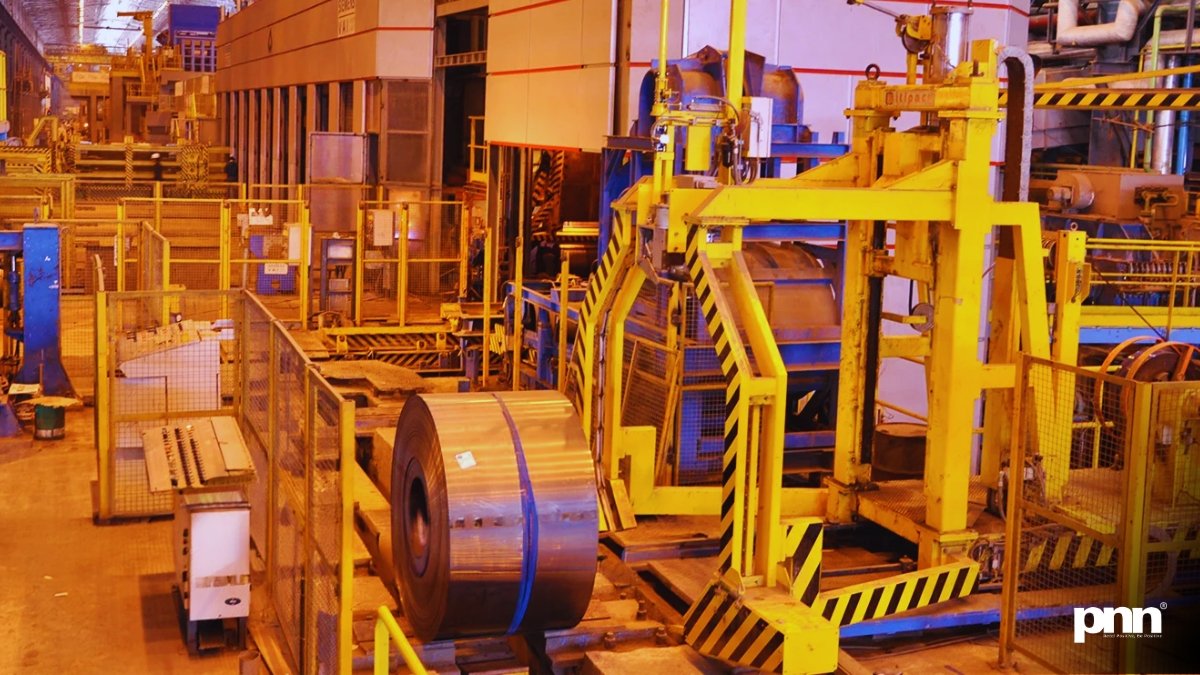New Delhi [India], October 30: India’s heavy industry just flexed. SAIL and NMDC turned in record-breaking numbers for FY26, while Commerce Minister Piyush Goyal rallied the nation’s export engines. If India’s industrial story was ever looking for a sequel, this is it, and it’s called momentum.
Steel Has a Spine, SAIL Proves It
The Steel Authority of India Limited (SAIL), the Maharatna that quite literally forges India’s backbone, has shown that resilience is not just a buzzword. In its financial results for the first half of FY26, the company delivered both physical and financial muscle.

Crude steel production stood steady at 9.5 million tonnes, keeping plants near peak capacity. But the real power play came from sales. SAIL clocked 9.46 million tonnes in sales volume, up a sharp 16.7% year-on-year. That kind of growth isn’t luck, it’s strategy.
Revenue from operations crossed ₹52,600 crore, a healthy climb from ₹48,672 crore in the same period last year, despite global steel prices taking a hit. Profit after tax (PAT) shot up 32% to ₹1,112 crore, and debt fell to ₹26,427 crore, marking steady progress toward pre-pandemic debt levels.
In plain terms: SAIL is sweating efficiency, not excuses.
Chairperson and Managing Director Amarendu Prakash summed it up best: “High capacity utilisation, increased sales, and relentless focus on efficiency have powered robust financial performance.” Translation: SAIL didn’t just hold the line, it pushed forward.
NMDC: Mining Momentum Turns to Gold
Not to be outshone, NMDC Limited, the iron ore giant feeding India’s steel juggernaut, posted a record-breaking Q2 FY26. The numbers read like a case study in operational excellence.

Production hit 10.21 million tonnes, up 23% year-on-year. Sales followed suit at 10.72 million tonnes, a 10% rise from last year’s quarter. Financials? Even stronger, turnover jumped 30% to ₹6,261 crore, profit before tax rose 35%, and PAT climbed 33% to ₹1,694 crore. EBITDA grew 32% to ₹2,385 crore.
These aren’t just figures; they’re proof that India’s mining sector has learned to perform under pressure.
Chairman and Managing Director Amitava Mukherjee didn’t mince words: “Record production, record sales, and strong financial growth this quarter are all indicators of our historic reliability.”
The subtext: NMDC isn’t just supplying ore, it’s fueling India’s industrial future. Its expansion plans are aligned with national priorities for self-sufficiency in steelmaking and a transition toward net-zero emissions.
The Government’s Chess Move, Exports and Ecosystem
Meanwhile, over in Delhi, Commerce and Industry Minister Piyush Goyal was orchestrating the next move in India’s economic chess game. Chairing a meeting with Export Promotion Councils and Industry Associations at Vanijya Bhawan, he reinforced what the numbers are already suggesting: India’s industrial base is firing on all cylinders.
The session brought together heavyweights from the Departments of Commerce, Revenue, DPIIT, and key councils across textiles, engineering, pharma, gems & jewellery, and services. The goal: build a more agile, facilitative export ecosystem.
The DGFT and Department of Commerce presented the ongoing reforms from the first half of FY26, measures aimed squarely at simplifying exports, diversifying markets, and cutting bureaucratic fat.
Representatives from FIEO, CII, FICCI, ASSOCHAM, SIAM, and NASSCOM all backed the Minister’s direction. Their message was clear: government reforms are paying off, but now’s the time to double down.
As Goyal put it, the government remains “committed to strengthening a facilitative trade ecosystem and enhancing global market access for Indian exporters.”
It’s a sentiment that dovetails neatly with the performance of industrial giants like SAIL and NMDC. The message: the ecosystem is aligning policy, production, and profitability.
India’s Industrial Engine Is Synchronizing
Let’s connect the dots.
- SAIL’s efficiency play shows manufacturing endurance.
- NMDC’s record output proves supply chain muscle.
- The Commerce Ministry’s export reforms signal policy alignment.
This trifecta is how India moves from being the world’s steel supplier to becoming an industrial powerhouse that competes on value, not just volume.
India’s steel sector alone contributes over 2% of GDP and employs more than half a million people. When giants like SAIL and NMDC perform, the ripple spreads to rail, construction, automobiles, and energy infrastructure.
What’s even more critical: both companies are threading sustainability into their strategy, moving toward digitalisation, carbon reduction, and efficiency at scale. That’s not just modern; it’s necessary.
The Road Ahead: From Strength to Strategy
The takeaway from this week’s industrial scoreboard is simple: India’s growth is no longer dependent on external demand alone. Domestic manufacturing and mining are becoming the engines of consistency.
The story of FY26, so far, is one of alignment between government intent and corporate execution.
And while global markets wobble between inflation fears and trade frictions, India’s heavy industries are showing what a confident economy looks like: measured, methodical, and bold enough to scale.
As the data pours in, one thing’s clear: the era of India as a manufacturing and export heavyweight isn’t on the horizon. It’s already here.

